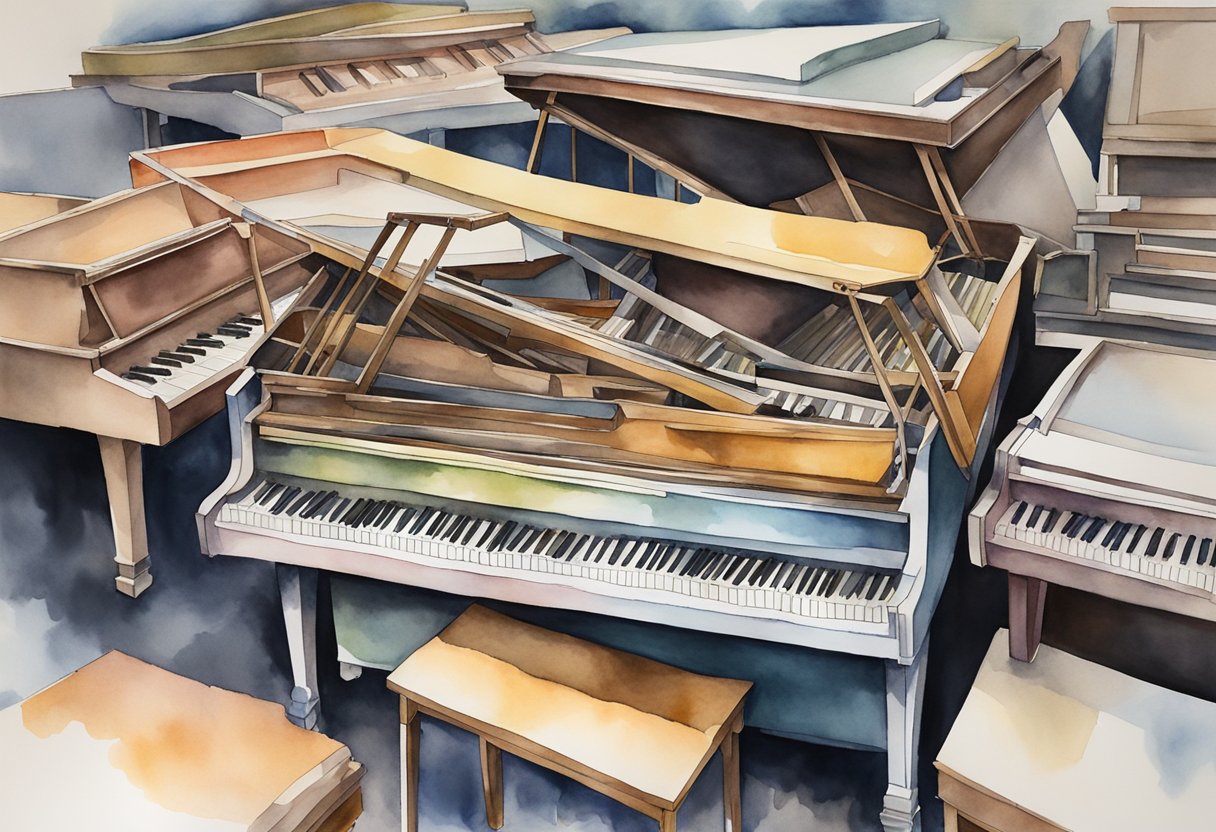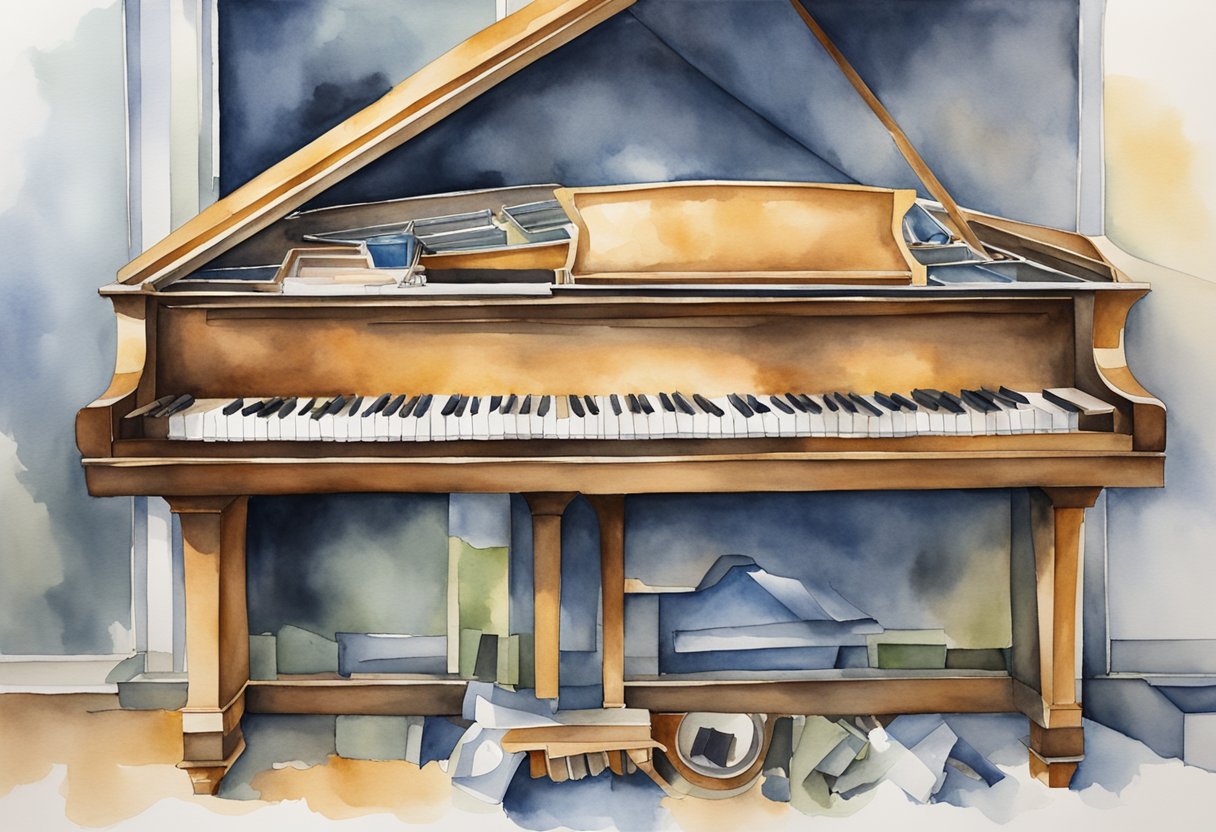As an Amazon Associate I earn from qualifying purchases.
Pianos can indeed be recycled, though the process involves more than just leaving it out with your weekly recycling.
Consider for instance the countless pianos that have served in music halls, practice rooms, and living spaces, accumulating both musical and sentimental value over time. It’s important to remember that each piano has parts that can be repurposed; the wood can often be reused for furniture or art, while metal components such as strings and pins can be melted down and recycled.
Want to Learn Piano?Click Here

From my years teaching music and witnessing the lifecycle of many an instrument, I can tell you that a piano’s end doesn’t mean the end of its usefulness. For instance, the ivory keys from vintage pianos, though no longer legally harvested or traded, can be restored and used to repair other instruments.
As a professional pianist, I’ve seen that although the sentimental value of a piano can’t be quantified, its physical components can continue to be part of the musical world in various forms.
Navigating the decision to part with a piano is especially tough when it’s been part of your personal or family history. But when a piano is beyond repair, rest assured that recycling is a viable option. This not only benefits the environment but is also a respectful nod to the instrument’s past contributions to music and our lives.
Recycling and Disposal of Pianos

When considering the options for an old piano, it’s important to understand that recycling and disposal methods can vary based on the instrument’s condition and materials. Let’s explore the most responsible and musical-life-extending options available to you.
Understanding Piano Materials
Your piano isn’t just an instrument; it’s a complex assembly of materials, many recyclable. Grand pianos and upright pianos primarily contain wood, which forms the body and keys, and metal, including steel strings and a cast iron harpor piano plate. The soundboard is typically made of timber, and tuning pins are often steel. Recognizing these materials is crucial for proper recycling and disposal.
Piano Dismantling Process
To dismantle a piano, a certain level of expertise is required to navigate the strings under high tension and the heavyweight of the cast iron plate. Each piano part, from the keys to the hardware, must be removed carefully. Professional piano dismantling can prevent injury or damage to recyclable parts, which can then be sent to a recycling facility.
Eco-Friendly Disposal Options
If a piano is beyond repair, eco-friendly disposal is key. Non-recyclable parts can, unfortunately, end up in landfills. However, many parts of the piano, such as the metal components, can be taken to a recycling facility. This helps reduce waste and ensures the longest life for each part.
Donating and Repurposing
Before considering disposal, think about piano donation. Many schools, churches, retirement homes, and recreation centers often appreciate the donation of old pianos. Organizations like piano donation projects facilitate the process and give your piano a second life.
Junk Removal and Professional Services
When a piano must go, junk removal services can help. It’s essential to choose a piano disposal service that is experienced in handling these large instruments. Junk haulers should be consulted to ensure they can manage both the size and the disposal needs of a piano responsibly.
Selling or Giving Away a Piano
Even if you’re not using it, someone else might treasure your piano. Listing it on platforms like Craigslist, eBay, Kijiji, or Facebook Marketplace is an excellent way to find it a new home. Whether it’s a baby grand or an upright, there are always enthusiasts keen to bring an instrument into their lives.
Hello & thanks for stopping by! I’m a professional concert pianist and piano instructor. In the United States, I’ve given successful performances in several places including New York, Florida, Connecticut, & New Jersey, I have also performed internationally in Italy and made my Carnegie Hall debut in 2014. I enjoy blogging about the piano, the art of performance, general music, current events and the latest in music production.
